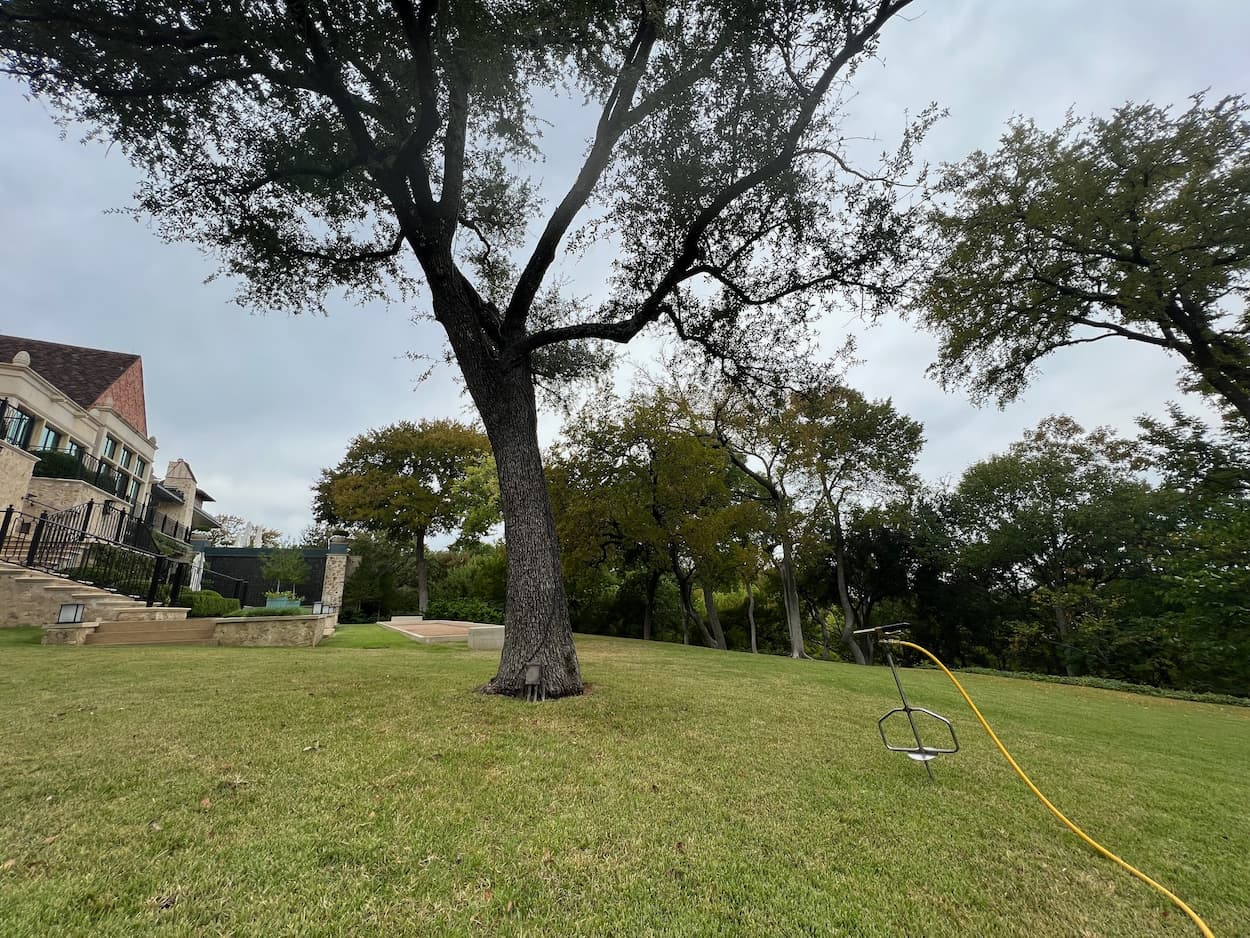Texas Shrubs & Tree Health Care Experts
Caring For Texas Shrubs & Trees Since 1990 Get A Free QuoteCall (817) 880-6130Tree & Shrub Pest Treatment Services in Sunset, TX
Our ISA Certified Arborist Can Help Treat Your Trees and Shrubs From Pests in Sunset, TX.
Arborist USA provides Tree & Shrub Pest Treatment Services in Sunset, Texas, and the surrounding areas.
Located in the scenic landscapes of Texas, Sunset is celebrated for its lush greenery and stunning shrubs. Essential to preserving this striking natural beauty is a comprehensive, environmentally sensitive strategy for tree and shrub pest treatments.
By diligently pursuing a pest treatment strategy that champions eco-friendly practices, Sunset sets a commendable precedent in sustainable pest management. This steadfast commitment ensures the town’s green spaces remain vibrant and healthy, underlining the fundamental message of the importance of coexisting harmoniously with nature.
If you are in need of Tree & Shrub Pest Treatment Services in Sunset, TX, please get in touch with Arborist USA today by calling us at (817) 880-6130, your Tree & Shrub Disease Specialist.
Signs of a Sick Tree or Sick Shrub
- Dead Branches
- Yellowing Leaves
- Fungi or Decay
- Bark Falling Off
- Discolored or Rusted Leaves
- Dying Tree or Shrub
- Leaf Discoloration
- Root or Insect Damage
- Leaves look like they’re being eaten
- Bark is Peeling
- Holes in leaves
- Holes on Bark or Branches
- Stunted Growth
- Canopy Dieback
- Bark Abnormalities
- Wilting
Tree & Shrub Helpful Tips
1. Common Pests:
Trees and shrubs in Sunset frequently fall victim to pests such as beetles, aphids, scale insects, borers, and caterpillars. Initiating effective treatments as soon as these pests are identified can help mitigate the risk of spread and irreversible damage.
2. Quick Identification:
Pest control in Sunset begins with prompt identification of harmful organisms. Early detection of pests allows for immediate intervention, effectively preventing large-scale damage to the town’s vegetation.3. Organic Pest Control:
Emphasizing the importance of harmony with nature, Sunset’s pest control strategy is centered around the use of organic methods. The community encourages the proliferation of beneficial insects that naturally regulate pest populations, thereby reducing the dependence on chemical insecticides, promoting biodiversity and ecological balance.4. Systemic Insecticides:
In cases where systemic insecticides are necessary, Sunset ensures they are utilized with precision and deliberation. This focused approach controls widespread pests while minimizing negative impacts on non-target species and the broader ecosystem.5. Biological Control:
The town also implements biological control methods to keep pest populations in check. By fostering native predatory species, Sunset taps into nature’s inherent self-regulating mechanisms, leading to minimal disruption to the local ecosystem.6. Preventive Measures:
Preventive measures form a critical part of Sunset’s pest control strategy. Routine health inspections of plants, strategic pruning, and optimal watering practices are diligently followed, strengthening plant health, and minimizing their susceptibility to pest infestations.7. Treatment Resistance:
To combat the potential for pest resistance, Sunset rotates its pest control methods. This strategy ensures pests cannot become immune to a specific method, sustaining the overall efficacy of its pest management efforts.8. Seeking an Arborist:
The town heavily relies on the expertise and guidance of certified arborists and reputable pest control professionals, ensuring its pest treatment measures remain cutting-edge, sustainable, and effective.
If you’re concerned or have any further questions about our Tree & Shrub Pest Treatment Services in Sunset, TX, or surrounding areas in North Texas, please call us at (817) 880-6130.
Tree & Shrub Pests
Listed below are common Tree & Shrub Pests found in Texas.
Aphids
A white soft body insect that creates a sticky "honey dew" structure on limbs or leaves, blocking nutrients.
Bagworms
Bagworms lay eggs that create small cone-shaped structures less than three inches in length.
Beetles
An invasive wood borer that is subject in all wood tissue that causes severe decline in trees health.
Gypsy Moth
A larva that boars into leaf structure that cause lesser of a foliation and decline in overall leaf structure.
Oak Gall
A growth deformity known as a "gall" commonly occur on oak trees subject to branches and other structures.
Termites
Termites, wood-destroying insect, eats away at all wood tissue, damaging the structures of the trees.
Twig Girdlers
Being a member of the long-horned beetle family, these girdlers are known to eat leaf and other tree areas.
Webworms
These caterpillars spin white webbing bag nests in tree branches and eat your tree foliage (leaves).
Certifications




Our Reviews

A+ BBB Rating based on 31 BBB Reviews
4.8/5.0 based on 83 Top Rated Local Reviews
4.6/5.0 based on 36 Facebook Reviews
4.0/5.0 based on 4 Trust Pilot Reviews

4.9/5.0 based on 90 Google Reviews
4.5/5.0 based on 13 Yelp Reviews
29 Recommendations on Nextdoor
Total Reviews: 286 ![]() Real Customer Reviews
Real Customer Reviews







